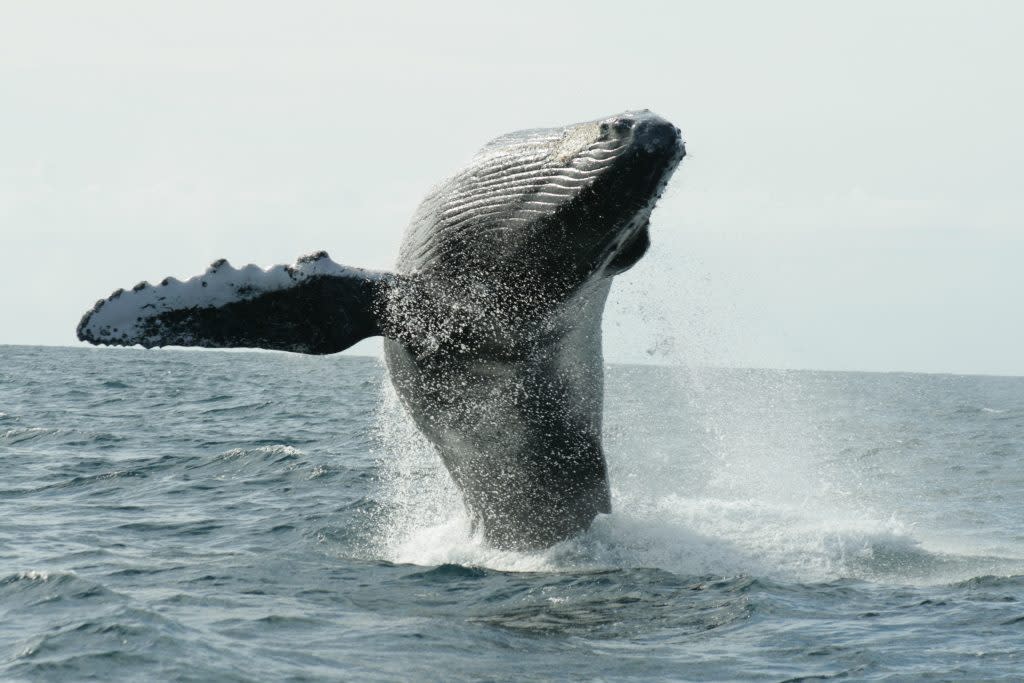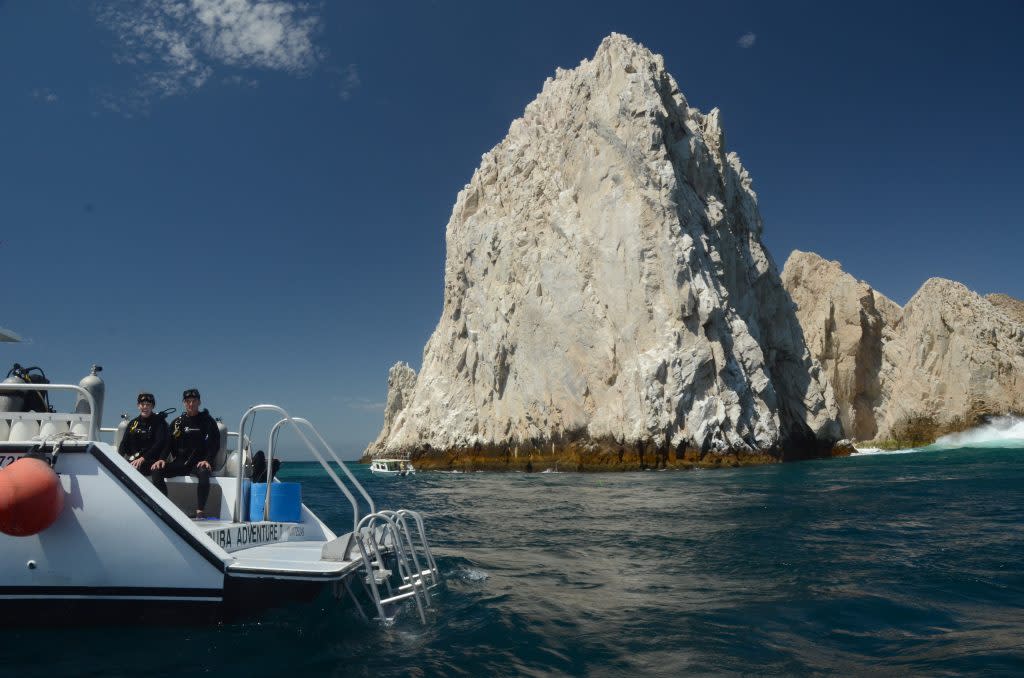In the winter months of the northern hemisphere, between November and April, hundreds, if not thousands, of tourists descend on the tip of the Baja Peninsula at Los Cabos to spy a glimpse of the ocean’s gentle giants – whales. Pods of dozens of the majestic creatures make their way to the warm waters around the Sea of Cortes to feed, frolic and flap their fins, making for some incredible viewing for tourists and locals alike.

Where do they come from?
The Humpback whales that inhabit the waters around Los Cabos are migratory, meaning that they head up and down the coastline throughout the year depending on the climate and the breeding season. In the warm summer months, the whales in the northern hemisphere head north to the Arctic to feed in the rich oceans, and then in the cooler months, they head towards the equator to breed and raise their young, so that the young calves aren’t harmed by the freezing polar waters in winter.
This annual migration cycle means that all along the coastlines of Canada, the United States and Baja California, whale populations will frolic, dance and play, breaching the surface, diving and lofting a fin to say g’day!

When is the best time to see whales?
As they’re up in the Arctic waters in the warm summer months, a keen whale watcher will know to come to Los Cabos in the winter. Thankfully, even in the middle of winter Los Cabos is still quite warm and sunshiney for the humans on land. Whale populations peak in between approximately December and April, but small numbers can be found as early as November and late as May.
While they’re playing around the Sea of Cortes, they aren’t relaxing in spas and enjoying some of the world’s best culinary experiences, they leave that to you! Instead, they’re putting on some huge exhibitions for whale watching boats, feeding and helping their young to grow and be ready for the cold northern waters. Anecdotal evidence suggests that there is a 2-3 day cycle of activity, where the whales will frolic and dance intensely for a couple of days, and then be a little more subdued for the following few. That doesn’t mean you won’t see any though, and trips are almost guaranteed to see at least one stray fin or tail!
Throughout the day, the whales will have different bursts of activity, and early in the morning, when there is fewer waves, you have a great chance of spotting whales. However, if you don’t mind a choppier sea, the afternoon, when there is more wind and waves, will see more whales breaching the surface and flipping about.

What’s the best way to see a whale in Los Cabos?
While it’s certainly not impossible, there’s less chance of seeing a whale from the poolside, or by the beach, which can be rough when you’re used to the world class service on offer at the Los Cabos resorts. However, a number of short tours leave from the Cabo San Lucas harbour to head out to a number of “secret spots” and areas that tour guides have had great success in. Many companies offer a guarantee on seeing a whale, with free tickets if your eyes go without even a single tail.
Tour companies like Cabo Adventures, InCabo Tours and High Tide all offer slightly different spins on whale watching tours, and combinations with other marine wildlife encounter tours. If you’ve ever wanted to see the world’s largest creatures play in the world’s greatest destination, then Los Cabos is the place for you.

